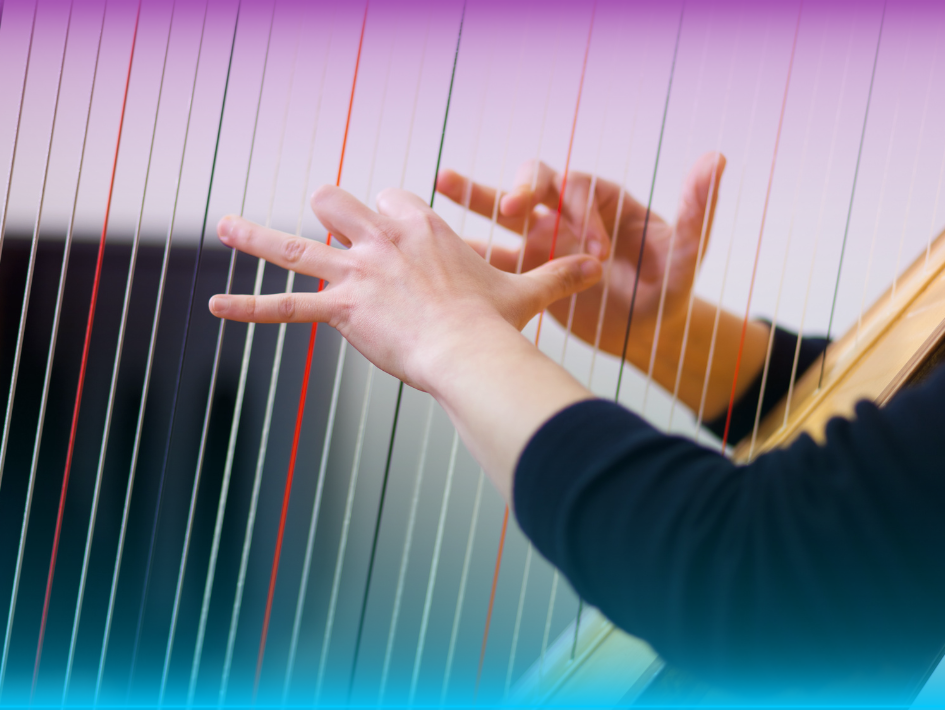Want to improve your harp skills? Playing harp in different keys is essential for any harpist. It might seem tricky at first, but with some helpful tips, you can easily handle any key.
This guide will share simple strategies to make key changes smoother and boost your confidence. By practicing these techniques, you'll become more versatile and ready for any musical challenge. Let's get started and take your harp playing to the next level!
Understanding Key Signatures
What is a Key Signature?
A key signature is a set of sharps or flats written at the beginning of a piece of music. It tells you which notes will be played sharp or flat throughout the piece. This will help musicians know the "home" note of the piece and
provide a guide for how the music will sound. For example, a key signature with one sharp usually means the piece is in G major or E minor.
Common Key Signatures for Harpists
Harp music often uses a few key signatures frequently. Here are some of the most common:
- C Major: No sharps or flats. It’s often used for simple, straightforward pieces.
- G Major: One sharp. This key is famous for its bright and clear sound.
- F Major: One flat. It offers a warm, rich tone.
- D Major: Two sharps. Known for its lively and energetic quality.
- A Minor: No sharps or flats, similar to C Major but with a more somber mood. The key signature is in a sharps position, but the overall tone is more melancholy.
Essential Techniques for Playing in Different Keys
Fingering Adjustments
When you change keys, your fingerings need to change, too. Start practicing scales in the new key to get used to the new finger positions. Make a habit of adjusting your fingerings as you play different pieces. This helps you get comfortable with the new key and
improves your overall technique.
Chord Shifts
Switching between chords is essential to playing well in different keys. Practice moving from one chord to another slowly, paying attention to the positions of your fingers. Use a metronome to keep a steady rhythm and gradually increase the speed as you become more confident.
Transposing Music
Transposing means changing the key of a piece of music to suit your needs. To transpose, identify the original key and then shift all notes up or down by the same number of steps. For example, if you need to move a piece from C Major to G Major, you’ll shift each note by five steps. Practice transposing short pieces to get comfortable with this skill.
Practice Strategies
Scale Practice
Practicing scales in different keys helps you become familiar with each one. Start by playing major and minor scales in various keys. This builds muscle memory and improves your ability to play smoothly in any key. Make it a habit to practice scales regularly.
Using a Metronome
A metronome is a tool for keeping a steady beat. Use it to practice key changes by setting it to a slow tempo. Start with easy pieces and gradually increase the speed as you get more comfortable. This will help you stay on time and make key transitions more fluid.
Regular Practice Routine
Create a practice chart schedule with dedicated time for working on different keys. Divide your practice sessions to focus on scales, chord shifts, and transposing music. For advanced players, include specific exercises that challenge your skills in all keys. Consistent daily practice will enhance your versatility and make you a more proficient harpist across various musical scenarios.
Advanced Techniques
Modulation
Modulation involves shifting from one key to another within a musical piece. To do this smoothly, practice moving between related keys, like from C Major to G Major. Focus on transitioning through common chords that connect the two keys, such as the dominant or relative minor chords. This technique adds variety and complexity to your music.
Improvisation
Improvising in different keys can be fun and challenging. Start by practicing simple melodies or patterns in various keys. Use familiar scales and chord progressions to guide your improvisation. Over time, experiment with different rhythms and harmonies. This will help you become more comfortable and creative when playing spontaneously in any key.
Resources and Tools
Sheet Music and Exercises
To practice different keys, use sheet music that includes a variety of key signatures. Look for exercise books designed explicitly for harpists that offer pieces in multiple keys. Websites and music stores often have collections of exercises and études that focus on critical changes.
Apps and Software
Several apps and software programs can help you practice key signatures. Try apps like
Muzeg to practice chords in different keys or create and transpose music. These tools can make practicing fundamental changes more accessible and interactive, giving instant feedback and practice options.
Summary
Playing the harp in different keys can be easier with the right approach. Start by understanding key signatures and adjusting your fingerings as needed. Practice scales regularly to get comfortable with each key, and use a metronome to keep a steady beat.
As you improve, explore advanced techniques like modulation and improvisation. These will help you become more versatile. Finally, use helpful resources like sheet music, exercises, and apps to guide your practice. You’ll feel more confident playing in any key and see your harp skills grow with consistent effort.
Enhance Your Harp Skills with Muzeg
Looking to enhance your harp playing skills?
Join Muzeg today for access to exclusive lessons, tips, and a community of professional players and musicians just like you. Sign up now and start improving your skills with expert guidance designed for your musical growth!

